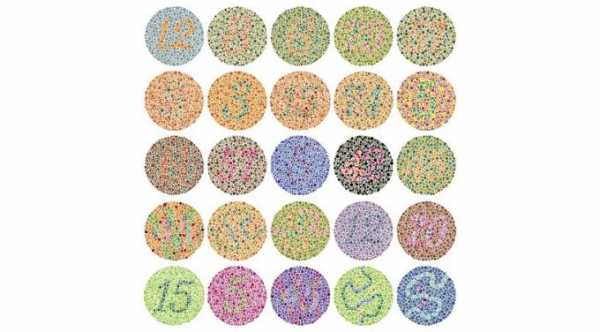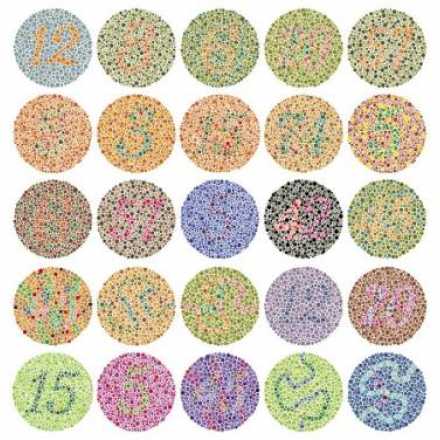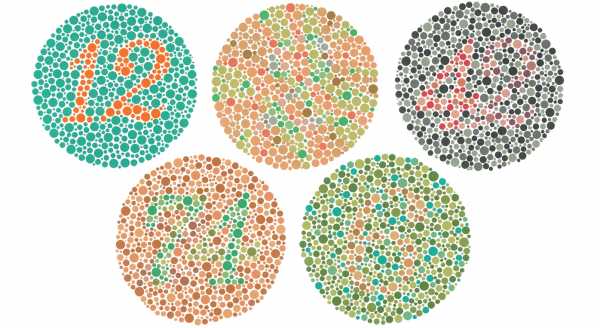
Ishihara Test to detect Red Green Colorblind
The Ishihara test is one of the most common color blind test worldwide. Ishihara test mainly detect red green colorblind.
The test consists of 38 Ishihara plates which are colored plates that contains dots of different size and color. These dots are arranged in specific patterns to form numbers or figures that can be seen by people with normal color vision while those with color deficiency won’t be able to see all or parts of these colored plates.
Some of the Ishihara plates are visible only to those with color vision deficiency and there are invisible to those with normal color vision.
Typical Ishihara test has 36 colored plates but there are also tests with 10, 14 or 24 plates.
Types of colored plates in Ishihara test
1- Demonstration plate
This is the first plate and is called the Demonstration plate. It typically has number "12” but also can be number “ 16”. This plate is seen by all individuals whether normal or color vision deficient. This plate is only for demonstration purposes, and usually not considered in making a score for screening purposes.
2- Transformation plates
People with normal color vision should see different figures from people with color vision defect.
3- Vanishing plates
Figures in these plates can be seen only by people with normal color vision.
4- Hidden digit plates
Figures in these plates can be seen only by people with color vision defect.
5- Diagnostic plates
Figures in these plates can be seen help to detect the severity intended to determine the type of color vision defect protanopia (red deficiency) or deuteranopia (green deficiency) and the severity of it.
Ishihara Test Online
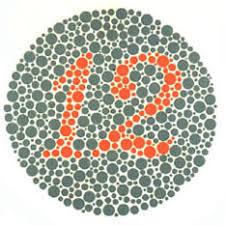
This plate is seen by everyone, with normal or abnormal red green colorblind.
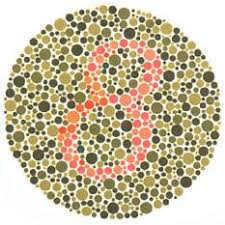
Normal person see it as 8 while person with Red-green deficiency see it as 3.
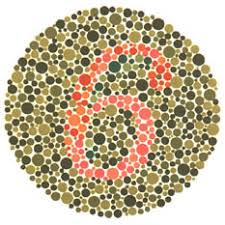
Normal person see it as 6 while person with Red-green deficiency see it as 5.

Normal person see it as 29 while person with Red-green deficiency see it as 70.
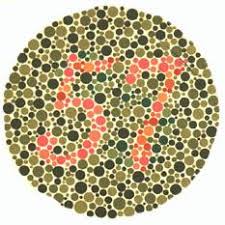
Normal person see it as 57 while person with Red-green deficiency see it as 35.
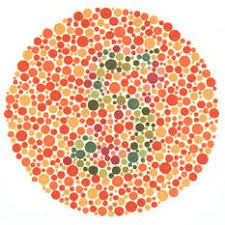
Normal person see it as 5 while person with Red-green deficiency see it as 2.
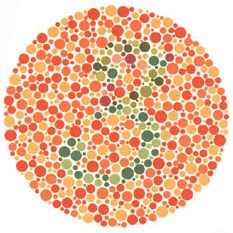
Normal person see it as 3 while person with Red-green deficiency see it as 5.
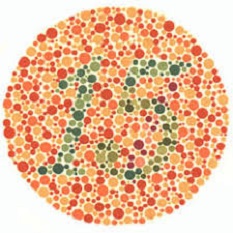
Normal person see it as 15 while person with Red-green deficiency see it as 17.
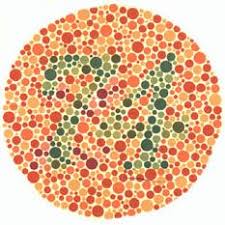
Normal person see it as 74 while person with Red-green deficiency see it as 21.
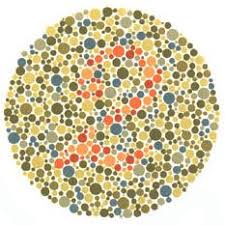
Normal person see it as 2 while person with Red-green deficiency: most people don’t see anything or see something wrong.
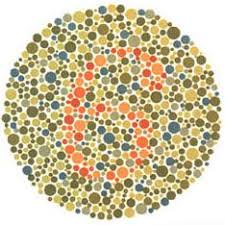
Normal person see it as 6 while person with Red-green deficiency: most people don’t see anything or see something wrong.
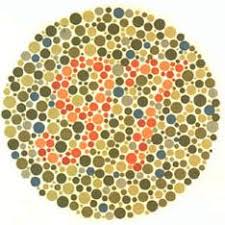
Normal person see it as 97 while person with Red-green deficiency: most people don’t see anything or see something wrong.
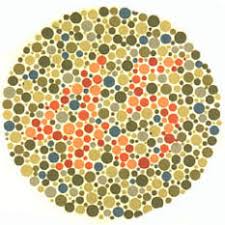
Normal person see it as 45 while person with Red-green deficiency: most people don’t see anything or see something wrong.
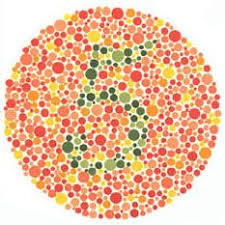
Normal person see it as 5 while person with Red-green deficiency: most people don’t see anything or see something wrong.
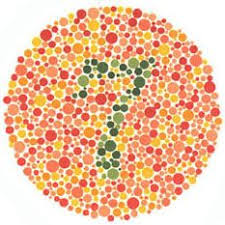
Normal person see it as 7 while person with Red-green deficiency: most people don’t see anything or see something wrong.
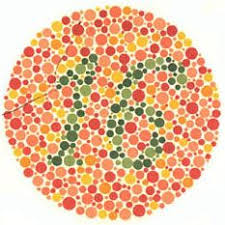
Normal person see it as 16 while person with Red-green deficiency: most people don’t see anything or see something wrong.
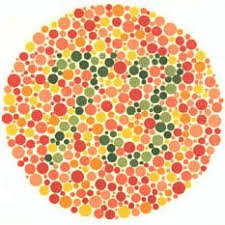
Normal person see it as 73 while person with Red-green deficiency: most people don’t see anything or see something wrong.
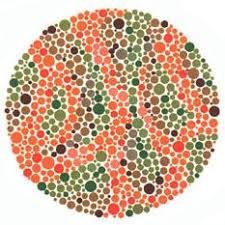
Normal person will see nothing while person with Red-green deficiency will see it as 5.
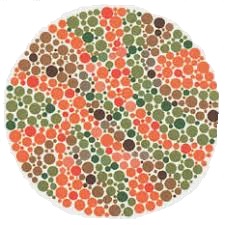
Normal person will see nothing while person with Red-green deficiency will see it as 2.
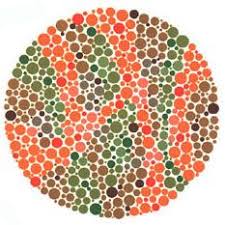
Normal person will see nothing while person with Red-green deficiency will see it as 45.
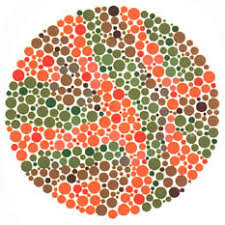
Normal person will see nothing while person with Red-green deficiency will see it as 73.
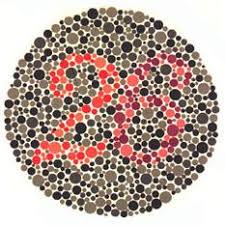
Normal person will see it as 26 while person with Protanopia or protanomaly will see it as 6 and patient with Deuteranopia or deuteranomaly will see it as 2.
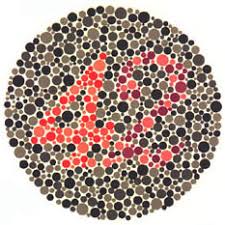
Normal person will see it as 42 while person with Protanopia or protanomaly will see it as 2 and patient with Deuteranopia or deuteranomaly will see it as 4.
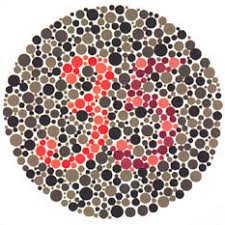
Normal person will see it as 35 while person with Protanopia or protanomaly will see it as 5 and patient with Deuteranopia or deuteranomaly will see it as 3.
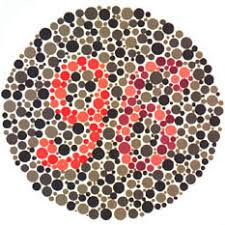
Normal person will see it as 96 while person with Protanopia or protanomaly will see it as 6 and patient with Deuteranopia or deuteranomaly will see it as 9.
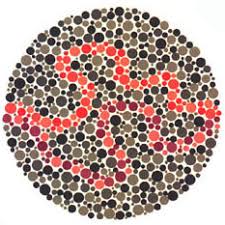
Normal person will see it as purple and red spots while person with Protanopia or protanomaly will see only the purple line and patient with Deuteranopia or deuteranomaly will only the red line.
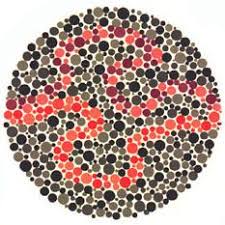
Normal person will see it as purple and red spots while person with Protanopia or protanomaly will see only the purple line and patient with Deuteranopia or deuteranomaly will only the red line.
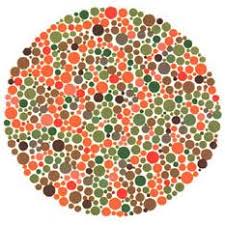
Normal person will see nothing while people with Red-green deficiency will see a line.
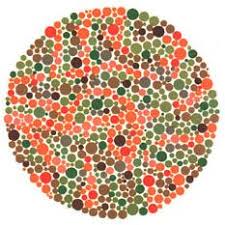
Normal person will see nothing while people with Red-green deficiency will see a line.
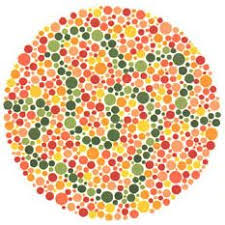
Normal person will see blue-green line while people with Red-green deficiency will see nothing.
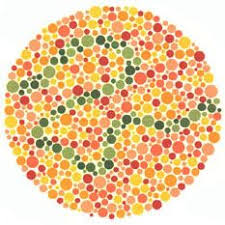
Normal person will see blue-green line while people with Red-green deficiency will see nothing.
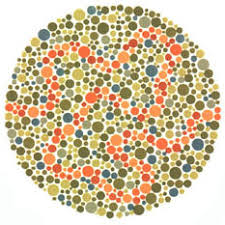
Normal person will see orange line while people with Red-green deficiency will see nothing or a false line.
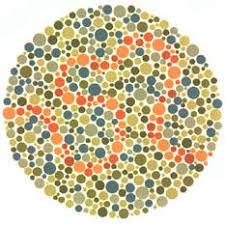
Normal person will see orange line while people with Red-green deficiency will see nothing or a false line.
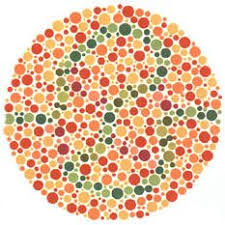
Normal person will see blue-green and yellow-green line while people with Red-green deficiency will see only red-green and violet line.
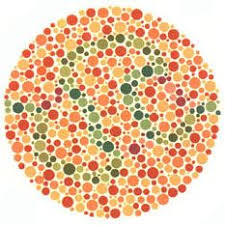
Normal person will see blue-green and yellow-green line while people with Red-green deficiency will see only blue-green and violet line.
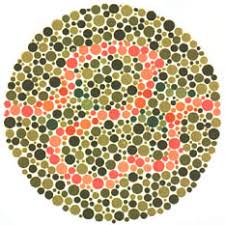
Normal person will see violet and orange line while people with Red-green deficiency will see only blue-green and violet line.



